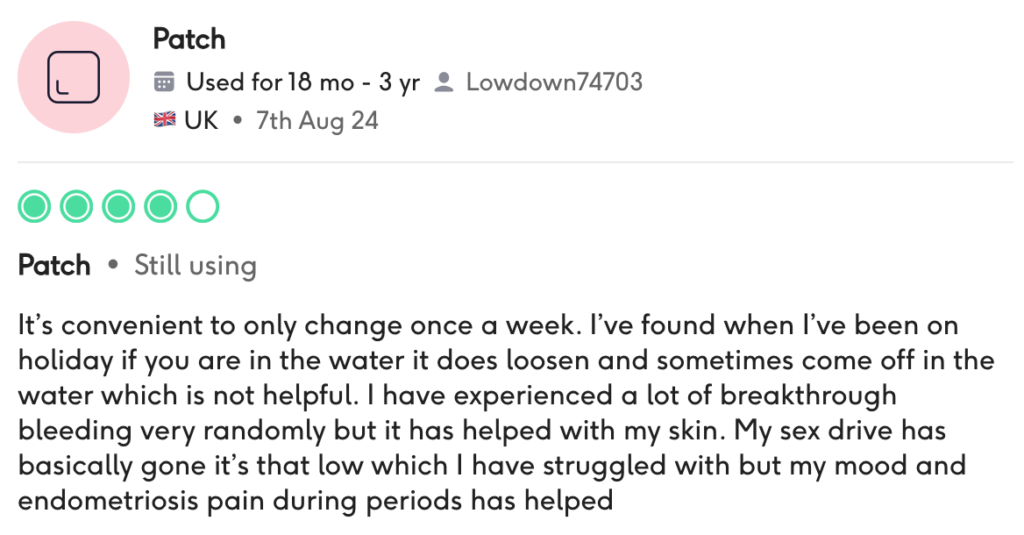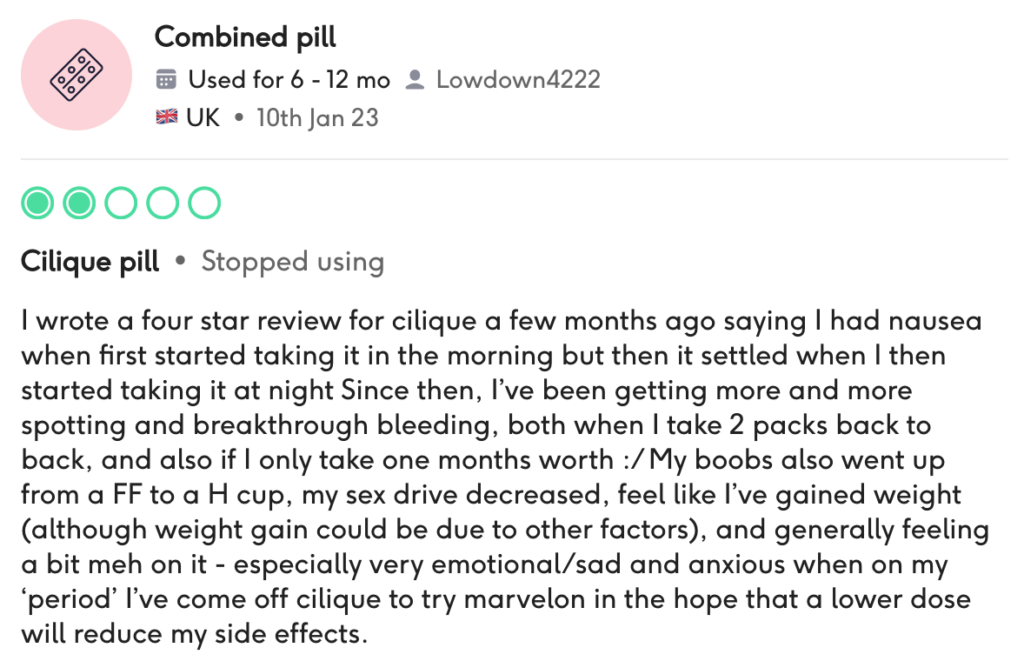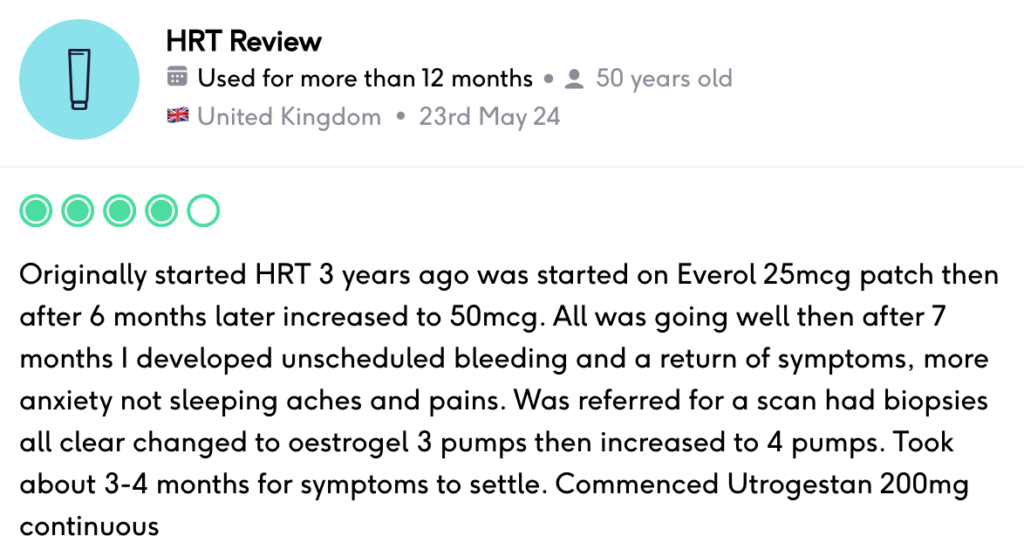Womb cancer symptoms to be aware of
In this article
What's the lowdown?
Womb cancer is the most common gynaecological cancer, yet only 1 in 5 people with a womb have heard of it.
The most common symptom is abnormal vaginal bleeding, including bleeding after menopause or between periods.
Risk factors include being overweight, taking oestrogen-only HRT, and having certain conditions like PCOS or Lynch syndrome.
Protective factors include having children, taking the combined contraceptive pill, and regular physical activity.
If something doesn’t feel right, trust your instincts and see your GP – it’s always better to check.
Womb cancer goes by a few names – endometrial cancer, uterine cancer, or cancer of the uterus. Whatever you call it, it’s a type of cancer that starts in the womb (the organ where a baby grows during pregnancy). The womb is also called a uterus and the lining that is shed each month as a period is called the endometrium.
Let’s talk numbers: cases of womb cancer have risen by 49% since the 1990s and now make up 3% of all cancers in the UK1. Womb cancer is the 4th most common cancer in women1, the most common gynaecological cancer and yet, only 1 in 5 women have heard of it2. It’s time to change that!
What are the symptoms of womb cancer?
Catching womb cancer early can be tricky because its symptoms often overlap with other common conditions, making them easy to miss. What’s important is knowing your normal and knowing when something isn’t right.
What are the most common signs?
One of the most common signs of womb cancer is abnormal bleeding from your vagina – which isn’t always helpful since many people with a uterus experience bleeding on a monthly basis. Abnormal bleeding means anything that’s not normal for you – like heavier periods than normal, bleeding/spotting between periods, or pink vaginal discharge that isn’t usual for you.
Symptoms of womb cancer after menopause include any type of amount of bleeding from your vagina 12 months after your last period3. This is called postmenopausal bleeding, or PMB for short. Womb cancer is most common in older women who are postmenopausal with highest rates among those aged 75 to 791. Any vaginal bleeding after menopause should always be investigated. It’s unlikely to be cause for concern but better to be safe than sorry.
Less common symptoms
Less common womb or endometrial cancer symptoms can include3,4,5,6,7,8:
- Abdominal / tummy pain
- A lump in your tummy / abdomen or between your hip bones
- Bloating or a swollen tummy / abdomen
- Pain during sex
- Pain in your lower back
- Changes in your toilet habits (both bladder or bowels)
- A new cough
- Changes on your blood tests such as:
- Low red blood cell counts, often called anaemia. Anaemia can cause tiredness, pale skin, dizziness, cold hands or feet and/or feeling breathless or fatigue4
- High platelet count, or thrombocytosis. Platelets are cells that help you stop bleeding when you get a cut.
- High blood sugar levels, or hyperglycaemia.
Even if these symptoms don’t seem related, it’s always a good idea to check in with your GP – better safe than sorry!
What are the first signs to look out for?
Catching any cancer early is the key to the best outcome. It can be tough to know what to look out for though. So, what are the first signs of womb cancer? Early signs of womb cancer are usually abnormal vaginal bleeding, which is also the most common sign!
Symptoms by stage
Before womb cancer develops, there is often a precancerous stage where the cells of the womb lining overgrow and start to change, this is called endometrial hyperplasia. This process is similar to how changes occur in the cells of the cervix before cervical cancer develops. Unfortunately, a regular screening test like cervical screening sadly doesn’t yet exist for womb cancer… but scientists are working on it! As womb cancer progresses, symptoms can change.
- Stage 1 womb cancer is where the cancer is still only in the womb9. Stage 1 womb cancer symptoms are the same as the early signs so that’s abnormal vaginal bleeding (bleeding between periods, heavier than usual bleeding), pink or unusual discharge and bleeding after menopause.
- Stage 2 womb cancer is where the cancer has grown into the cervix but not spread beyond the womb10. Stage 2 womb cancer symptoms are the same as stage 1 symptoms.
- Stage 3 womb cancer is when the cancer has spread beyond the womb to the vagina, ovary or lymph nodes11. Stage 3 womb cancer symptoms include the same as signs as stages 1 and 2 but may also include tummy pain, a lump in your tummy, bloating, pain during sex, changes to your toilet habits, unintended weight loss or feeling full quickly after eating.
- Stage 4 womb cancer is where the cancer spreads to other parts of the body12. Stage 4 womb cancer symptoms are the same as stage 3 but may include other symptoms caused by the spread of cancer, like feeling weak or shortness of breath.
What else could these symptoms be?
Other conditions can masquerade as cancer of the uterus symptoms, and are more common than endometrial cancer. These conditions are usually linked with abnormal vaginal bleeding, and include endometriosis, fibroids, polyps or adenomyosis which can cause heavy periods or bleeding in between periods13,14,15. Sometimes the symptoms are caused by changes to the cervix, or even vaginal dryness.
Abnormal bleeding is also a common side effect of contraception, it usually occurs in the first three months of using a new combined hormonal contraceptive method, like the pill, patch or ring. This is called “breakthrough bleeding”. The copper coil can also cause changes to your bleeding pattern for up to 6 months after insertion. Progesterone-only contraception, like the hormonal coil, progesterone-only pill and implant, can also cause changes.
There’s also perimenopause to consider as well, where periods can become irregular and slowly come to halt. This usually occurs in women in their 40s and 50s, but perimenopause can start at any age.
Postmenopausal bleeding, can sometimes be a side effect of taking hormone replacement therapy (HRT). Your GP or HRT specialist should know if you have any new bleeding 3 months after a dose change to investigate you for endometrial hyperplasia and adjust your HRT if required16.
What are the risk factors of womb cancer to be aware of?
Risk factors for womb cancer include:
- Older age
- Being overweight or obese – this increases the risk of womb cancer by 34%!
- Being diagnosed with polycystic ovary syndrome (PCOS)
- Having more menstrual cycles throughout your reproductive life (including starting your periods early, not having menopause until after the age of 55 and not having children)
- Having diabetes
Higher levels of oestrogen in your body are related to a higher risk of womb cancer. Oestrogen causes the womb lining, or endometrium, to thicken. If too many cells are growing due to the high levels of oestrogen, there is more chance a cell will develop into cancer17. Think of it like a bag of fruit. If you pick up ten pieces, there’s only a small chance one might be bad. But grab the whole crate, and the odds of finding a rotten one are much higher.
The main risk factor for womb cancer is being overweight or obese. Fat cells produce oestrogen, so carrying more body fat means higher levels of this hormone.
If you use HRT, you are putting additional oestrogen into your body, this is why it’s so important to understand how to take progesterone correctly as part of your HRT.17
The risk of womb cancer also increases with age, the older you are the more likely you are to have cells that grow abnormally and develop into cancer17.
Other risk factors include using Tamoxifen (a drug taken for breast cancer) or, Tibolone (a synthetic type of HRT) diabetes or having a genetic condition that runs in your family such as Lynch syndrome.
Are there any factors that can decrease my risk of womb cancer?
Factors that reduce the risk of womb cancer include:
- Using the contraceptive pill
- Using a coil
- Having children at an older age
- Exercise
- Drinking coffee
Some factors can decrease your risk, like having children or taking the combined or progestogen-only oral contraceptive pill17.
Amazingly, use of the contraceptive pill prevents 25% of cases of womb cancer in the UK!
Physical activity is likely to be protective against womb cancer, mainly because it lowers body weight and helps control hormones in the body. Drinking coffee can also lower your risk of womb cancer, although scientists are unsure why this is17. Either way, a good excuse not to cut back on the bean juice!
When to see a GP
If something doesn’t feel normal or regular for you, book an appointment with your GP. It’s always better to get it checked out – your health is worth it! GPs want you to book an appointment if you:
- Have vaginal bleeding in between your periods
- Have vaginal bleeding after sex
- Develop heavy periods, especially if you have PCOS or diabetes
- Have any of the symptoms listed above which are not going away
- Have any vaginal bleeding after menopause
How to prepare for your GP appointment
Whether your appointment is in person, over the phone, or a video call, it’s always a good idea to have a notebook handy. You can use it to jot down anything your GP says, so it’s easy to refer back to later.
Before your appointment, take some time to write down your symptoms – when they started, how long they’ve lasted, and whether anything makes them better or worse. This way, you won’t forget any important details. If you prefer, you can use your phone for note taking (I keep my period tracker app on mine, which is really handy!).
It’s also helpful to note other key details, like the first day of your last period (if that applies), any medications or supplements you’re taking, and any family history of cancer. If you’re feeling nervous, don’t hesitate to bring a friend or family member for support. They can help you feel more at ease during the appointment.
What to expect at the GP appointment
At your appointment your GP will likely ask you questions about the symptoms you’ve been having. You can bring a friend or ask for a chaperone for support. They may also take a few measurements like blood pressure, heart rate and temperature and record your height and weight. They may ask if they can feel for any swollen lumps and bumps in the areas where you’re describing symptoms, such as around your tummy or pelvis.
The GP may then perform an internal examination of your pelvis. Remember, you’re allowed to ask for a chaperone or a friend to accompany you for this part too! The GP uses two gloved fingers inside your vagina and a hand on your tummy to check for anything out of the ordinary. They may use a speculum too, like in a cervical screening test. You are also allowed to ask them to stop at any time if you feel pain or feel uncomfortable. Depending on what they find, you may be referred for more investigations.
Your GP is a professional who has trained for years to be able to pick up and diagnose conditions like womb cancer. The first step is booking that appointment and you shouldn’t put it off.
Our medical review process
This article has been medically reviewed for factual and up to date information by a Lowdown doctor.





